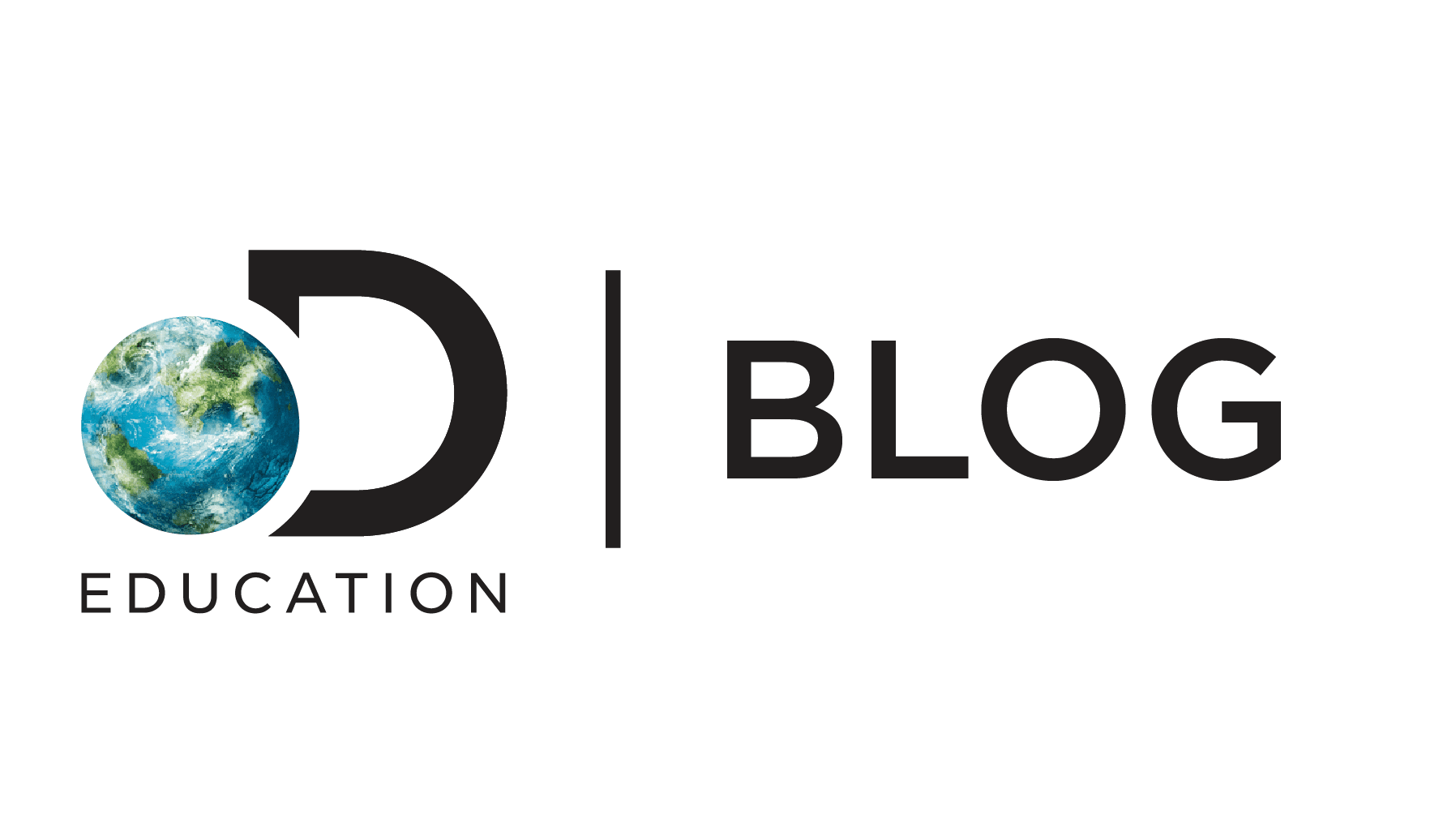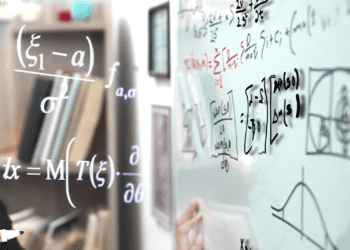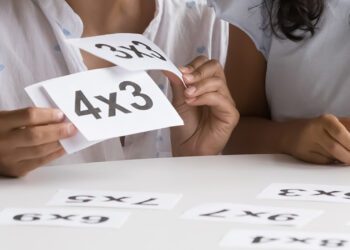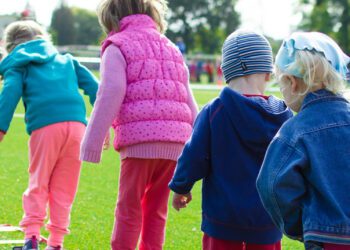The students in Sarah Johnson’s third period Algebra hunch over their desks working through the mysteries of Pythagoras. The room quietly echoes the sound of pencils on paper and the occasional desk squeak.
From her perch in the back Mrs. Johnson reflects on how similar they all seem when testing. But having dealt with adolescents for longer than most of them have been alive, she knows this is an illusion.
Twelve are boys and thirteen are girls. Each one is different. Even the “identical” Franklin twins are very different. Ali Franklin loves mathematics and is excited about what he will learn this year in Algebra. Abram is an excellent student, but he’s really nervous about how he’ll do in Algebra because mathematics has never been his best subject.
Mrs. Johnson’s superintendent has been telling parents that the district is working to personalize learning and she knows that her students could really benefit from instruction that meets them where they are. She’s been through differentiated instruction workshops and has tried her hand at a number of learning apps, but in the hush of 25 students working, who, by the way represent only one-fifth of her total students, she wonders: What exactly is personalized learning?
Learn more about how DE can serve as your daily learning platform. Check out our live and on-demand events or sign in today!
What is Personalized Learning?
Like many terms in education, personalized learning suffers from ambiguous definitions. Some proponents of personalized learning go to great lengths to distinguish among differentiated instruction, individualized instruction, and personalized learning. Others view personalized learning as an umbrella term that includes differentiation and individualization of instruction. For some schools and districts, personalized learning refers to what others call blended learning (combining some form of online instruction with more traditional classroom instruction).In most cases, personalized learning is a three-part process:
- Instructional planning that promotes deeper student learning.
- Understanding of each student’s learning needs and interests.
- Provisioning of appropriate learning experiences that match each student’s unique learning profile.
The 2016 National Education Technology Plan states, “personalized learning refers to instruction in which the pace of learning and the instructional approach are optimized for the needs of each learner. Learning objectives, instructional approaches, and instructional content (and its sequencing) all may vary based on learner needs. In addition, learning activities are meaningful and relevant to learners, driven by their interests, and often self-initiated.”
While different educators mean slightly different things when they refer to personalized learning, most seek to leverage technology to manage the learning needs of all students and to engage students as active participants in setting goals, identifying learning pathways, tracking progress, and determining how learning will be demonstrated.
From the teacher’s perspective, there are three guideposts that mark out the road to personalized learning.
1. Redefined Roles for Students and Teachers
In traditional classrooms, teachers make most of the important decisions about learning. They select instructional materials, decide which assignments students will complete, and determine when the assignments are due. On occasion, teachers will build some aspect of student choice into their lessons, but even then the teacher is usually seen as making the important decisions while giving students some limited choices.
In personalized learning, teachers help students know how they learn best and where they are in a progression of learning goals and objectives. Teachers then work with students to determine specific learning targets and suggest a variety of learning activities that match the mutually agreed-upon targets. Begin by encouraging your students to choose the activities in which they have the greatest interest and to design a plan for how they will complete agreed-upon assignments. Build ongoing assessment into the plan so that students will be empowered to adjust and modify the learning plan. Research2 has shown that empowering students to make more decisions about how and what they learn is associated with higher student achievement. In a personalized learning environment, teachers facilitate learning and work as partners to maximize the learning of each student.
2. Flexible Learning Environments
A very consistent characteristic of personalized learning is expanding where and when students learn and making greater use of digital resources. If students have mobile technology, they can watch the video clip at home and come to class with a list of questions that they wish to discuss with their learning teammates. Students with mobile technology can complete practice exercises on their device while they are sitting on the school bus and going home. The goal is for students to learn everywhere and anytime. When learning is personalized, students can pursue their interests and continue to learn well beyond the traditional school day.
3. Competency-Based Learning Progressions and Personal Learning Paths
Okay, this is probably the hardest part of personalized learning. Historically in education, we have held time constant and allowed learning to vary. In competency-based learning, students continue to work on a given learning target until they are able to demonstrate mastery. The curriculum will have to be carefully rearranged into competency-based learning progressions. This will allow students to work on some topics in different order and still master expected standards within each unit. In fully rearranged curriculum materials, students may even be able to develop proficiency with the same set of skills using very different resources. It’s best to go down this part of the road with several partners – either find comrades to share the load of developing learning progressions for a unit or two or purchase a service that has already built curricula based on learning progressions. The Instruction team at Discovery Education has begun this work for middle school math.
Fully realized, personalized learning seeks to use different contexts to help students develop the knowledge and skills they are responsible for learning. Students, in consultation with the teacher, may select learning resources that match their interests, current skill level, and preferred learning modality. And at the end of the unit, students have choice as to how they demonstrate what they have learned. One student may demonstrate mastery by creating a new learning resource and another may write a more traditional paper.
From the education leader’s perspective, here are three ways to facilitate and support the movement to personalized learning.
1. Begin With a Vision
Collaborate with community stakeholders to create a shared vision for what our school/district means by personalized learning. Given the broad definition of personalized learning, it is essential that your district set clear goals to work towards. What strategies should be used to support personalized learning? How heavily does this vision rely on technology and what needs to transpire to ensure that we have the infrastructure to support these technology needs? With limited access to technology, what strategies should be used to support the use of digital content in the classroom? Do we have adequate digital content resources accessible in our schools? If not, what are we doing to enrich our bank of resources?
2. Cultivate a Learning Community
Support the development of a learning community on personalized learning. While there are a lot of questions related to technology, the heart and soul of a personalized learning initiative is about teaching and learning. It is essential to bring school-based and central office leaders together with teachers to learn about 21st century approaches to teaching. The learning community members will need to decide how personalized learning aligns with other initiatives within the district. The learning community provides the perfect opportunity for district leaders to demonstrate the power of “walking the talk.” Partner with other stakeholders and decide together what you need to learn. Get to know the staff members as learners. Give learning community members clear targets for what they are expected to know and be able to do and then give them lots of choice about how they move toward those expectations. Give them choice as to how they will demonstrate their knowledge. Explicitly show staff members how leaders are using the principles of personalized learning within the learning community model.
3. Develop a Plan
Encourage learning community members to develop an action plan for implementation. Implementing a personalized learning initiative is a major task. Lots of activities need to happen and the team needs a plan to guide the implementation. Instructional leaders must communicate the vision and be prepared to support the acquisition of resources, while giving stakeholders primary responsibility for making decisions about a lot of the specific details.
Those closest to the students are the ones who need to understand in detail what this will involve and they need to see how it will benefit their students. Every teacher understands how different the students in her classes are and every teacher in her heart understands that personalized learning has the potential to improve learning for the students she works with every day. But teachers also need to understand how this will impact them and the work they do. They deserve the opportunity to be a part of the design of the initiative from the beginning. Now is not the time for classroom teachers to feel that those who work in the central office are forcing another major change on them.
Charlotte-Mecklenburg Schools in North Carolina underwent a careful process of defining and planning for personalized learning. You can see the plan and definitions they created here: http://pl.cmslearns.org/
It’s an exciting time to be in education. Finally, the digital resources exist to make personalized learning a reality. Our students use digital resources all the time and they already know how to use them to learn more about their personal interests. Our job is to bring together their natural curiosity, their interests, and natural learning preferences to empower them into realizing their full potential. That’s an awesome charge.
About the Author
With over 26 years experience as an educator, Marty Creel leads Discovery Education’s innovative curriculum and instruction team. Marty began his career as an engaging social studies teacher known for creative use of technology to deepen learning. As a district-wide curriculum, instruction, and professional development leader in a large urban/suburban school system he was the architect for a thoughtful transition to instructional standards that empower teachers and principals as instructional leaders.






